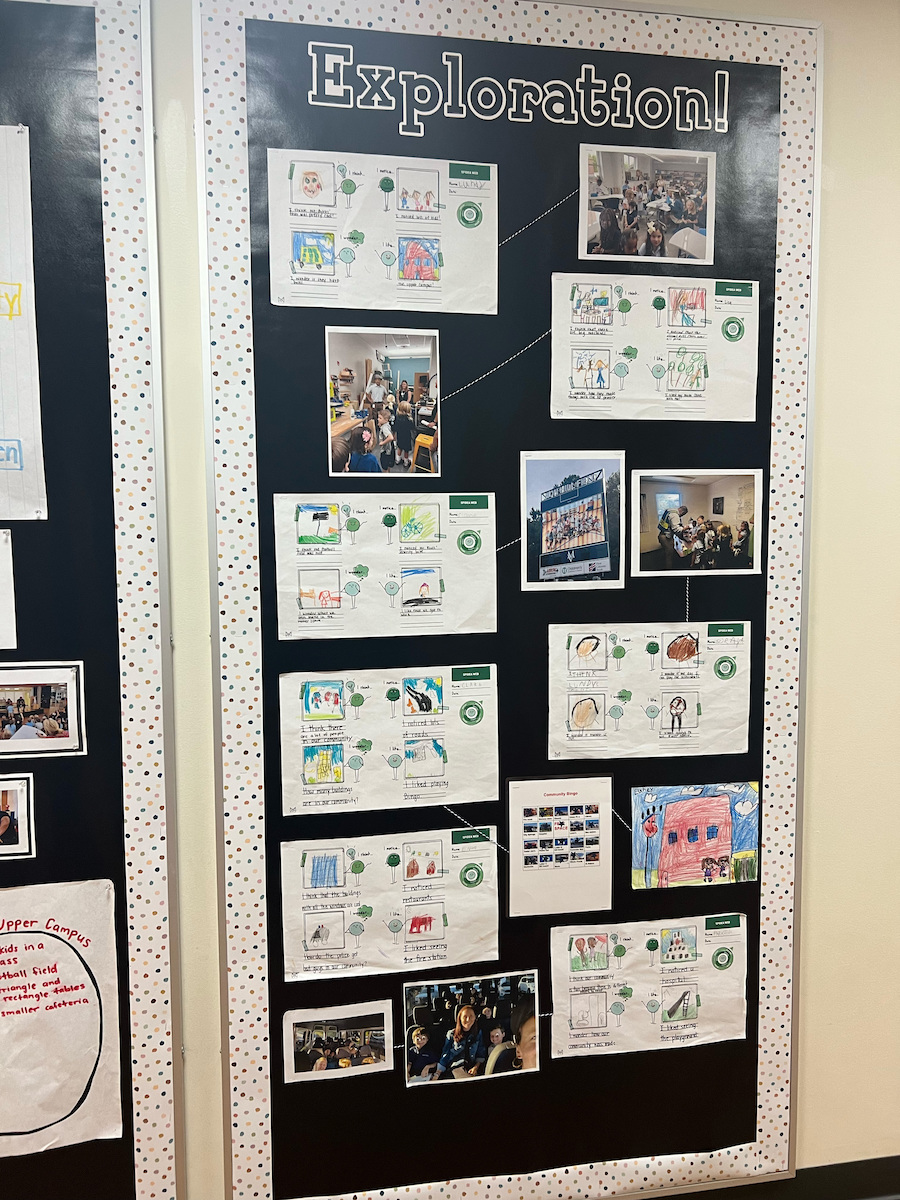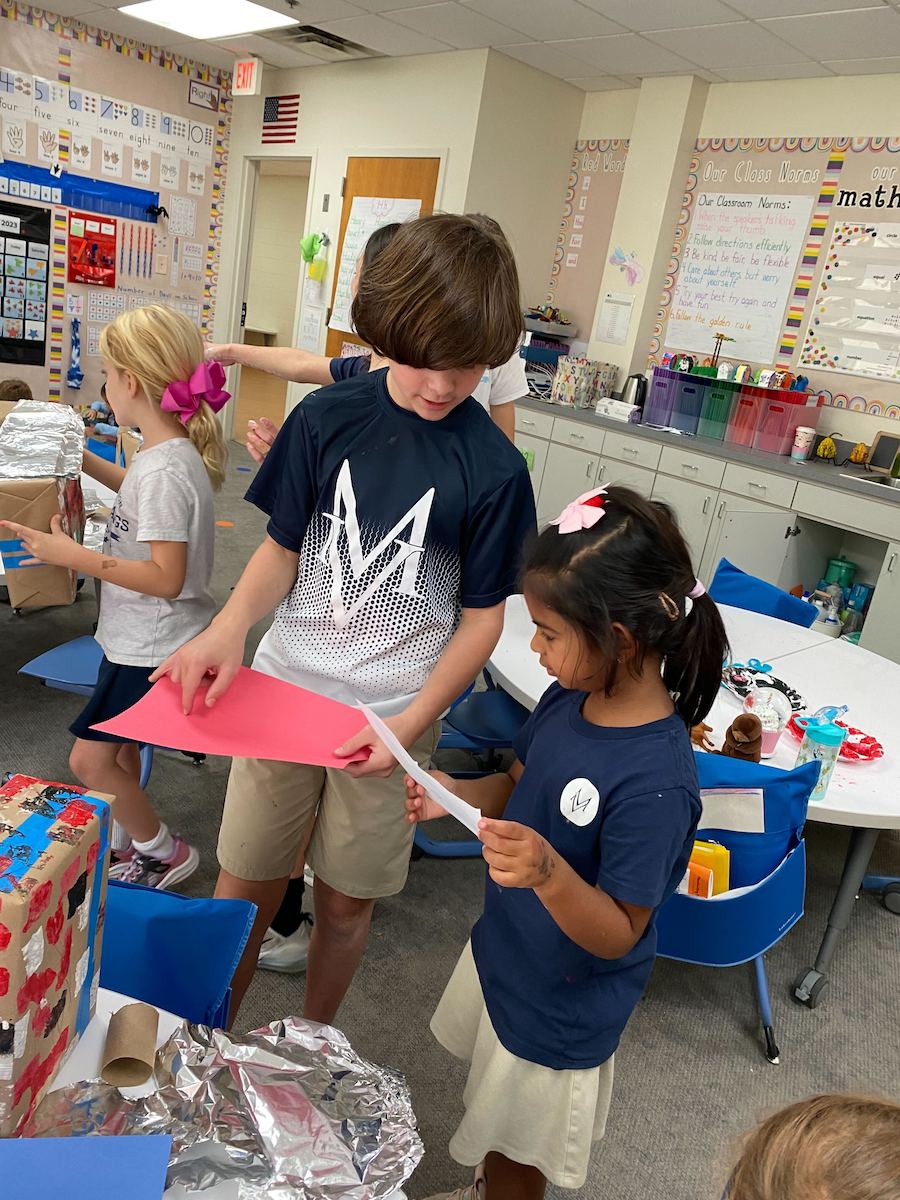Over the past 10 weeks, Kindergarten students embarked on their first inquiry-based learning (IBL) unit, a fascinating journey to explore the concept of community. The project, led by Kindergarten teachers Brandi Tuggle and Heather Freaney, not only delved into the students’ immediate surroundings but also fostered essential skills and a deeper understanding of the world they inhabit.
Starting with Questions:
The project began with a simple yet profound question: What is a community? The young learners quickly identified various communities they belong to, such as their neighborhood, school, team, city, and state. This initial exploration laid the foundation for a broader investigation into the components that make up a community.
Exploring Lower and Upper Campus:
To provide a real-world perspective, the students toured both the Lower and Upper Campuses. Russ Malsnee, Mount Vernon’s Director of Safety and Security, shared insights into his role in ensuring the safety of the community, offering a unique security standpoint. The exploration continued as the students compared campuses, examining differences in rules and expectations.
Interviewing Community Members:
The project emphasized skills including connecting, communicating, and critical thinking as they practiced their interview techniques. In addition to interviewing Mr. Malsnee, they also engaged with other community members, including Head of School Kristy Lundstrom, as well as Michelle McIntosh-Ross, a City Planner for the city of Sandy Springs. Ms. McIntosh-Ross’s insights into long-term planning and community development left a lasting impression on the young minds.
Community Bingo Game and Bus Ride:
The students embarked on a bus ride to explore the broader community. Armed with stickers and community bingo cards, they eagerly identified key elements such as hospitals, office buildings, churches, and the local Chick-fil-A. This interactive game allowed them to connect theoretical knowledge with real-world observations.
Building Their Own Communities:
Back in the classroom, using the Spidea Web tool from the Little Learner’s Field Guide, the students synthesized their learnings by creating their own communities. Each class developed a unique vision, considering factors like location, essential services, and recreational spaces. Volunteers from Grade 5 played a crucial role in the construction phase, assisting with the intricate details of the project. Gloria R, Gracie P, and Emma M all missed their recess to help their friends in Kindergarten with the cutting and fabrication of their communities.
Ms. Tuggle explained the critical thinking behind the students’ plans. “They decided, now we’re going to build what our community would look like, and they brainstormed things they NEEDED and things they WANTED. We got out big butcher paper and they decided WHERE to put things, and WHY things needed to be in certain areas. They were saying things like, ‘Well, if the houses are here, the school’s got to be close to the neighborhoods, the hospitals should be in the middle because everybody’s got to get to it, same with police officers and the fire department.’ The wants were amusement things like a race track. They were very adamant that we need a racetrack, but their logic of where it went was – it’s going to be really loud – so it needs to be far away from the neighborhoods and there might be some pollution from the car, so it also needs to be far from the neighborhoods. I thought that was very interesting for them.”
Insights and Surprises:
The project unveiled unexpected insights, especially during the interaction with the city planner. The students were astonished to learn about the lengthy planning processes, including community meetings and the careful consideration of future needs. The experience provided them with a deeper understanding of the complexity involved in shaping a community.
Ms. Freaney shared how impressed she was with the level of questions the Kindergarten students asked the Sandy Springs City Planner. “The questions were phenomenal. They really dug deeper into, things like, what if the roads need to be bigger because they’re more cars? I think it just opened their eyes to what makes up a community and what we need and why – that every piece is integral.”
The Kindergarten community exploration project not only allowed students to grasp the concept of community but also honed essential skills such as critical thinking, solution-seeking, and communicating. The integration of real-world experiences, guided tours, and hands-on activities enriched their learning journey, fostering a genuine connection between the students and their surrounding communities. Through this immersive project, our school continues to inspire a sense of curiosity and civic responsibility in its youngest learners.









